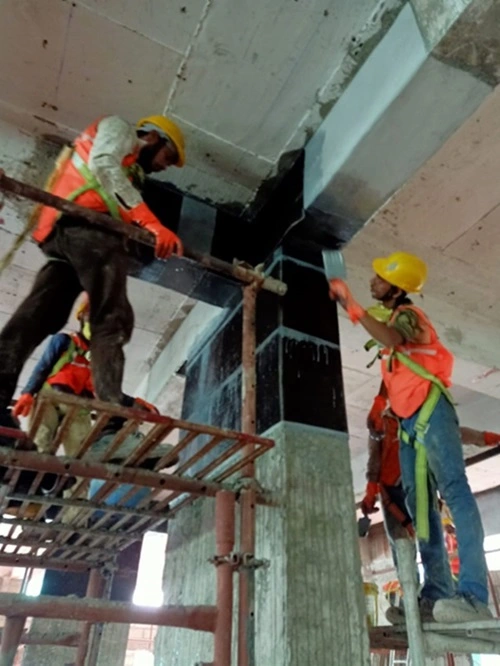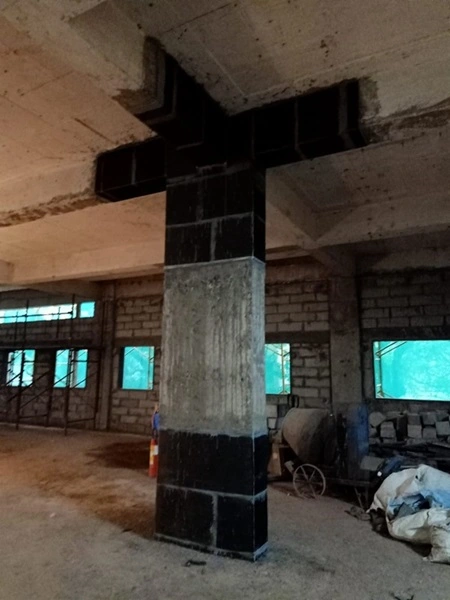Importance of Carbon Fiber Wrapping for Columns in Structural Strengthening
 With the growing population, infrastructural and construction demands are at the peak. The construction industry is searching for ways to speed up work without compromising the quality of material used.
With the growing population, infrastructural and construction demands are at the peak. The construction industry is searching for ways to speed up work without compromising the quality of material used.
The need for sustainable construction material has made use of carbon fiber popular.
Carbon fiber column wrapping method is beneficial for improving the performance of the structure against seismic activity.
Carbon wrapping for columns, carbon fiber wrapping for beams and carbon fiber wrapping for slabs are ideal alternative to the traditional method of structural strengthening.
Fiber wrapping concrete columns helps buildings and columns in the prevention from corrosion. The carbon fiber wrap concrete repairs and reinforces the concrete structures.
Application of carbon fiber to the exterior of a concrete column, beam, or slab, adds significant strength without giving additional weight to foundations and other structural members.
Carbon fiber wrapping for columns reduces the need for further maintenance and structural repairs work. Thus the fiber column covers provide enough strength to the overall structure.
Fiber wrapping concrete columns improve durability. Carbon fiber wrapping columns are simple due to the flexibility of the use of carbon fiber mesh. The material makes it easy to wrap it around structures that are unsuitable for traditional methods.
Fiber wrapping is a cost-effective method and safe against seismic events or natural disasters.
Carbon fiber wrap concrete repairs buildings that are damaged or dilapidated.
Carbon Fiber Wrapping For Industrial and Commercial Buildings
 Carbon fiber wrapping for industrial and carbon fiber wrapping for commercial buildings
Carbon fiber wrapping for industrial and carbon fiber wrapping for commercial buildings
Carbon fiber wrapping for columns or carbon fiber reinforced concrete is applicable in various construction projects. They work towards building maintenance or concrete structure strengthening for residential or industrial buildings, commercial properties, industrial chimneys, and bridges.
Carbon fiber wrapping for industrial purposes applies to strengthen structures subject to heavy loading and machinery vibrations.
The application of carbon fiber wrapping for commercial enables the repairing of apartment buildings, sports arenas, concrete slabs, and more.
Benefits of Carbon Fiber Wrapping
Carbon Fiber Wrapping offers a range of benefits and advantages such as:
- Enhancing the strength and durability of structures
- Improved load-bearing capacity
- Corrosion Protection and Rehabilitation
- Seismic Retrofitting and Earthquake Resilience
- Customization and improved aesthetics
- Cost-Effective
- Versatile and flexible
Quick Enquiry Form!
Structural Repairs Services
Get your brochures
Contact us
- Address: Gubbi Civil Engineers, 3rd Floor, Odessa Boutique Offices, Rd Number 9, Near Old Passport Office, Wagle Industrial Estate, Thane (West), Maharashtra - 400 604.
- Phone: 7498523824 / 9820636360
